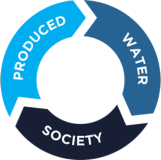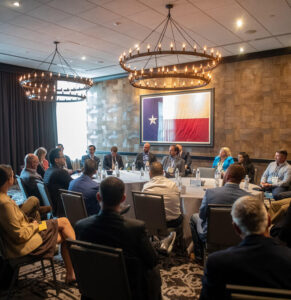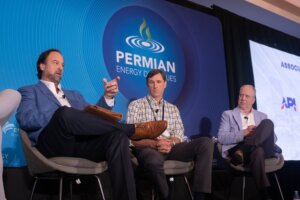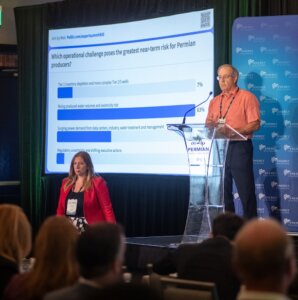
2025 Permian Energy Dialogues
Driving cross-sector solutions from New Mexico to Texas — with global energy security impact.
Accelerating collaboration on strengthened infrastructure, water stewardship, and lower-emission pathways.
Unifying producers, midstream, water and tech partners, regulators, and capital.

Overview
The Permian Energy Dialogues provides a platform to address challenges and opportunities within one of the most influential regions in the global oil and gas market. This regional forum brings together key stakeholders to collaboratively develop solutions, build broader coalitions, and identify effective pathways for the future of energy in the Basin and beyond.
Our Distinguished Speakers

Catarina Gonzales
Commissioner, Texas Commission on Environmental Quality (TCEQ)

Matt Kolesar
Chief Environmental Scientist, ExxonMobil

Bruce Baizel
Division Director, Compliance and Enforcement, New Mexico Environment Department

Greg Bloom
Assistant Commissioner of Mineral Resources, New Mexico State Land Office

Derek Adams
Managing Director, Permian Energy Development Laboratory

Joey Bernica
Director, Climate Investment

Rich Dealy
Vice President, Permian Basin, ExxonMobil

Joni Carswell
CEO & President, Texan by Nature

Stephen Cole
Executive Vice President & Partner, Five Point Infrastructure

Coy Connelly
Head of Legal, bpx energy

Missi Currier
President & CEO, New Mexico Oil & Gas Association (NMOGA)

Michael Gibson
Deputy State Director, Minerals, Bureau of Land Management

Thomas J. Gleeson
Chairman, Public Utility Commission of Texas (PUCT)

Molly Determan
President, Energy Workforce & Technology Council

Nile Garritson
Portfolio Manager, CalSTRS

Beth Garza
Senior Fellow, Energy & Environmental Policy Team, The R Street Institute

Holly Hopkins
Vice President – Upstream Policy, API

Melanie Kenderdine
Cabinet Secretary, New Mexico Energy, Minerals & Natural Resources Department

Michael Grossman
Chair, Technical Committee, Produced Water Society

Kris Kindrick
Senior Vice President, Commercial, Kinetik

Jeff Hammad
Chief Commercial Officer, Golden Pass LNG

Kristi Hobbs
Vice President, System Planning and Weatherization, ERCOT

Ben Cahill
Director, Energy Markets and Policy, University of Texas at Austin

Jacob Nagy
Founder & Co-Chief Executive Officer, Avant Natural Resources

James Lackey
Director, Customer Relations, Xcel Energy

Elizabeth Lieberknecht
Regulatory and Legislative Manager, Midcontinent, Environmental Defense Fund

Michelle Miano
Division Director, Environmental Protection, New Mexico Environment Department

Ryan Murphy
Facilities Engineering Manager, Power Distribution, Diamondback Energy

Jason Pigott
President & Chief Executive Officer, Vital Energy

David Rains
General Manager of Assets, Shale & Tight Business, Chevron

Chris Nichols
Vice President, Permian Basin, Continental Resources, Inc.

Elena Nikolova
Manager – Climate Intelligence, RMI

Carolina Ortega
Vice President of Sustainability and Communications, Milestone Environmental Services

Monika Simoes
Founder & CEO, Energy Dialogues

Robert Sadlier
Deputy Director, Water Quality Division, Texas Commission on Environmental Quality (TCEQ)

Brian Sellers
Permian Water Infrastructure Manager, ExxonMobil

Joaquin Silva
Managing Partner, Energy Innovation Capital

Darin Zanovich
CEO, Mesa Minerals Partners

Martina Sittler
VP Eng & Construction – Operations & Engineering, Targa Resources

Dr. Katie Smye
Research Associate Professor, Bureau of Economic Geology, The University of Texas at Austin

Mike Hightower
Associate Director, New Mexico Produced Water Research Consortium

Ted Wooten
Chief Engineer – Oil & Gas Division, The Railroad Commission of Texas (RRC)

Clay Brett
Partner, Baker Botts L.L.P.

Masoud Aghajani
Domain Champion – Brine Concentration, SLB
2025
Lead Partner

2025
Strategic Partners


2025
Corporate Partners



2025
Association Partners


2025
Exhibitor

2025
Roundtable Hosts



2025
Working Group Partner


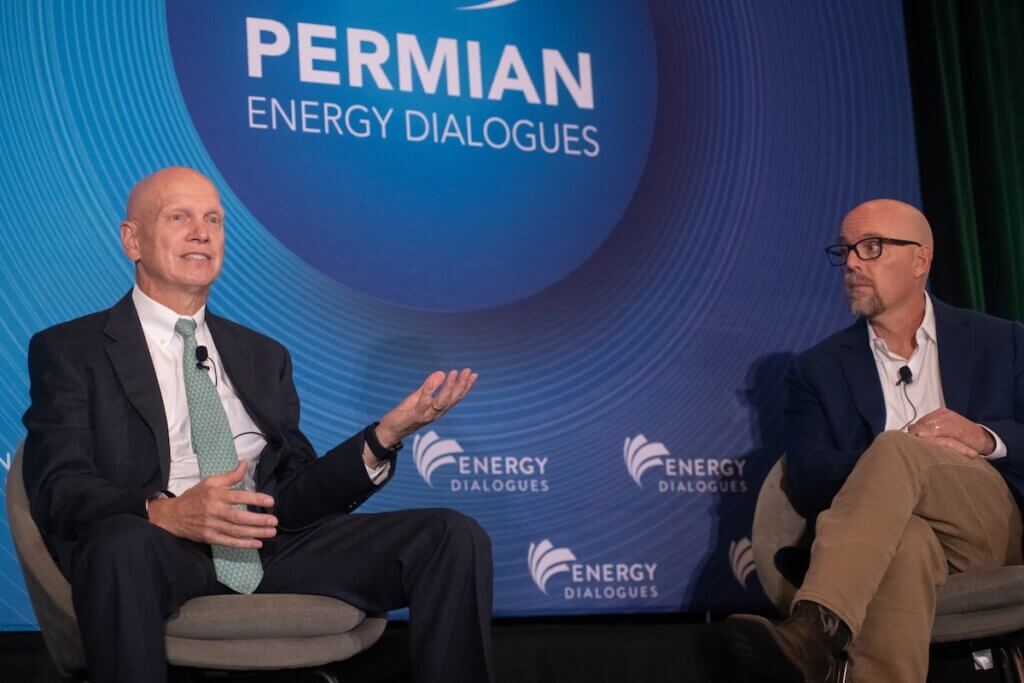
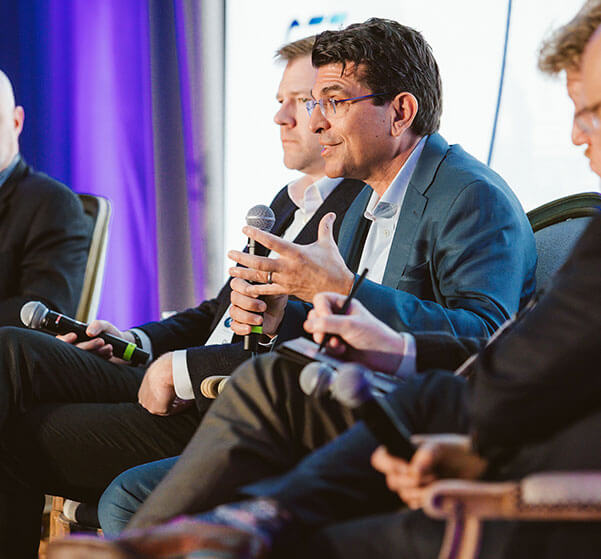
2025 key topics covered:
- The regulatory divergence between Texas and New Mexico: Impacts on permitting, emissions compliance, and investment
- Permian infrastructure pressures: Pipeline takeaway constraints, electrification demand, and water system capacity
- Federal and state agency alignment on methane enforcement, produced water policy, and seismicity risks
- Capital trends across the Permian: M&A momentum, infrastructure investment, and risk-adjusted returns
- Unlocking the next phase of Permian gas: Responsibly sourced supply, LNG alignment, and stranded gas solutions
- Rethinking produced water strategy: Scaling reuse, enabling discharge, and navigating liability
- Technology and emissions transparency: Deploying advanced monitoring, certification, and performance frameworks
- The evolving role of independents: Adapting to consolidation, capital access barriers, and new expectations for community engagement
- Transmission, permitting, and market design: Addressing power constraints in support of industrial and digital load growth

Connect with the most influential stakeholders in the Permian Basin engaged in energy production, water management, emissions reduction and infrastructure rollout.
The Permian Energy Dialogues convene the full value chain from one of the world’s most critical energy hubs. Regulators from New Mexico and Texas, global producers, independent operators, midstream leaders, and investors come together under the Chatham House Rule for candid dialogue and collaboration.
Join the Permian Energy Dialogues. A trusted forum for senior leaders across commercial, technical, and regulatory spheres to address the Permian’s key challenges, from infrastructure and emissions to investment and policy.
Why Partner?
Stand alongside leaders like ExxonMobil, Chevron, BPX, and Diamondback Energy. Benefits include:
- Thought leadership in sessions and working groups
- High-visibility branding across event platforms
- Access to the exclusive Water Working Group
- Direct engagement with decision-makers shaping the basin’s future
2025preliminary agenda
Day 1
September 16, 2025
Speaker:

Monika Simoes
Founder & CEO, Energy Dialogues
- How are shifting federal priorities affecting drilling and infrastructure approvals and how can Permian operators and investors adapt?
- In what ways is the evolving regulatory landscape shaping produced water disposal, reuse, and cross-border transfers between Texas and New Mexico
- What are the most critical regulatory bottlenecks where BLM and state agencies overlap and what targeted improvements in federal-state coordination could streamline permitting and compliance?
- As climate targets and energy security goals converge, how are federal agencies approaching emissions, seismicity, and rising power demand from industrial growth and data centers?
Moderator:

Holly Hopkins
Vice President – Upstream Policy, API
Speaker:

Michael Gibson
Deputy State Director, Minerals, Bureau of Land Management
- How are energy leaders navigating regulatory divergence between Texas and New Mexico, and where do you see the most impactful opportunities for collaboration with state and federal regulators?
- What strategies are operators deploying to manage increasing uncertainty around federal regulation, agency staffing, and shifting executive actions and how is this influencing long-term planning?
- With Tier 1 wells becoming scarcer and produced water volumes rising, how are producers adapting operationally to more complex Tier 2 and 3 development, seismicity risks, and evolving disposal regulations?
- As data centers and industrial users drive significant load growth in the Permian, what are the key barriers to scaling electricity generation and transmission and how are producers evaluating opportunities to co-locate, self-generate, or diversify into power provision?
- How are Permian producers responding to changing economic conditions potentially impacting Permian such as international trade tariffs, emissions standards, and investor expectations to ensure long-term competitiveness in a tightening global market?
Hosted by:
![]()
Hosted by:
![]()
- How are policy shifts around drilling setbacks, severance taxes, and permitting shaping investment flows and rig activity?
- With seismicity driving reinjection limits and shallow injection mandates, how are operators and regulators working to avoid trading one risk for another, especially as shallow formations near drinking water zones and orphan wells?
- With each state taking a different stance on emissions reporting, methane enforcement, and measurement protocols (OGMP, MIQ, etc.), how are producers navigating compliance?
- How can regulators better support smaller operators and service providers, many of whom are sidelined by MSA barriers, permitting complexity, and shifting tax or setback policies?
- How can Texas and New Mexico move toward shared frameworks on produced water reuse, emissions enforcement, and setbacks as cross-border pipelines and reuse projects grow in scale?
- How are rapid industrial development, population growth, and the rise of energy-intensive sectors placing new pressure on the Permian’s existing infrastructure?
- In what ways are constraints across pipeline takeaway, power transmission, and water systems creating compounding infrastructure challenges—and what types of buildout are most urgently needed?
- How are takeaway bottlenecks driving increased flaring and gas price volatility? Can stranded gas be better leveraged for local power generation or on-site use to ease system pressure?
- What are the primary roadblocks to expanding transmission and pipeline infrastructure and how are leaders and regulators responding with permitting strategies, investments, and cross-sector coordination?
- How can electricity, gas, and water infrastructure planning be more effectively aligned to meet advanced industrial load growth, support emissions goals, and enhance overall system resilience?
- How is consolidation limiting smaller operators’ access to midstream infrastructure, capital and service contracts, as MSAs and financing increasingly favor larger players with scale and lower risk profiles?
- What approaches or innovations are they adopting to meet emissions rules effectively with limited resources?
- How are disposal restrictions, seismicity risks, cross-border policy differences, and rising water costs changing the economics for non-major E&Ps?
- What does meaningful local reinvestment look like for independents, and how are they working with landowners and communities to drive shared value through water reuse, biodiversity, and land stewardship?
- How can they stay competitive amid regulatory scrutiny, limited capital access, and rising costs tied to water handling, electrification, and reporting? Are there opportunities for collaboration with majors to offset those barriers?
Hosted by:

Day 2
September 17, 2025
- M&A outlook and key drivers across E&Ps, midstream, and services: How are investors weighing asset quality, long-term inventory, and regulatory risk? Will the momentum continue?
- From royalties and mineral portfolios to water management, infrastructure, and EPC-backed turnkey solutions: Which sectors within the Permian are attracting the most attention?
- As data centers and industrial projects look to West Texas, how are land ownership, natural gas access, water reuse, and transmission infrastructure shaping capital allocation?
- How are legislative proposals such as severance tax hikes, methane intensity thresholds, and new water disposal fees reshaping how capital is being allocated across Texas and New Mexico assets?
- How are global energy market dynamics, LP expectations, and shifting geopolitical priorities influencing long-term investment strategies in the energy sector in the Permian and beyond?
Hosted by:
![]()
- What’s preventing broader adoption of produced water reuse in the Permian and what’s needed to scale pilot projects into commercial solutions, especially for mid-size operators facing MSA and capital barriers?
- As shallow injection mandates take effect and seismicity risks rise, how are operators reevaluating the long-term cost, capacity, and liability of disposal infrastructure? Can treatment and reuse become competitive?
- What can Texas and New Mexico learn from each other? Is there a path toward aligning cross-border reuse, discharge standards, and economic incentives?
- How can regulators create consistent permitting frameworks, support innovation, and embed transparency and local engagement into water policy?
- What standards and permitting pathways are needed to enable safe discharge or reuse of treated produced water for agriculture, data center cooling, or municipal use? And what breakthroughs are needed to reduce costs, de-risk liability, and attract long-term capital?
- How are producers and midstream companies addressing takeaway constraints, flaring limits, and stranded gas economics—and what infrastructure investments are most urgent?
- In what ways is rising global LNG demand influencing Permian gas development strategies, pricing dynamics, and emissions performance requirements?
- What role is responsibly sourced gas playing in differentiating Permian supply, and how are producers approaching certification, monitoring, and market access?
- As differentiated gas becomes more important to LNG buyers, how are operators aligning measurement protocols (OGMP 2.0, MIQ) with real-time field data and what are the emerging models for monetizing certified gas?
- Where does Permian gas fit in the global low-carbon supply mix, and what will determine its competitiveness in a decarbonizing, LNG-driven world?
- How are producers deploying advanced technologies from continuous methane monitoring to satellite tracking and AI-based emissions analytics to improve operational performance and reporting?
- What are the key technical, regulatory, and cost-related barriers to adopting continuous methane monitoring and how can operators push for acceptance of these technologies under OGMP 2.0 or IRA-based credits?
- How are operators leveraging responsibly sourced gas certifications and performance transparency to differentiate Permian supply in a competitive global LNG market?
- What’s needed from regulators, buyers, and technology providers to create a credible, scalable framework for emissions accountability and operational excellence?
- Can technology innovation also drive cost savings, safety improvements, and community trust?

Join us for Dinner – an evening of continued connection and conversation while enjoying the Austin skyline
As the sun sets over the Austin skyline, dinner offers more than a view. It’s an extension of the dialogue. After a day of candid, solutions-focused conversations this setting invites continued exchange among peers driving the region’s energy evolution.
Let’s raise a glass to purposeful collaboration and the leaders shaping what more energy with fewer emissions truly looks like in the field.


Energy Perspectives Podcast
Hosting extraordinary dialogue that is timely, relevant, and significant by focusing on the global scale of energy, right down to the micro details.
The aim is to have strategic dialogue, welcoming diverse viewpoints from participants within and outside the industry, as well as the formation of solutions driving a sustainable energy pathway forward, critical amidst an on-going energy transition.
Energy Perspective: Permian Gas Grows Up with Golden Pass LNG, Juniper Capital, and Kinetik
Energy Perspective: Permian Gas Grows Up with Golden Pass LNG, Juniper Capital, and Kinetik
Energy Perspective: Permian Gas Grows Up with Golden Pass LNG, Juniper Capital, and Kinetik
Energy Perspective: Permian Gas Grows Up with Golden Pass LNG, Juniper Capital, and Kinetik


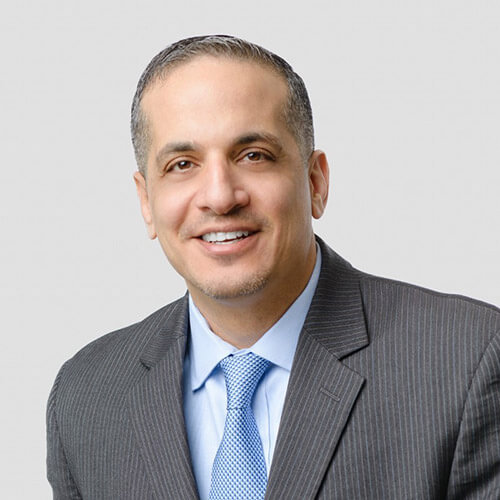
- Kris Kindrick, Senior Vice President, Commercial, Kinetik
- Josh Schmidt, Partner and Chief Operating Officer, Juniper Capital
- Jeff Hammad, Chief Commercial Officer, Golden Pass LNG

Get exclusive access to insights from the Permian Energy Dialogues 2024.
This report synthesizes current executive-level insights on regulatory alignment, produced water management and seismicity, infrastructure pressures, and evolving investment considerations. It is designed to support informed discussions and strategic planning as the Permian Basin continues to evolve.
Certain perspectives in this report may reflect expectations about future conditions. These viewpoints are subject to change and should not be interpreted as predictions or investment advice.










